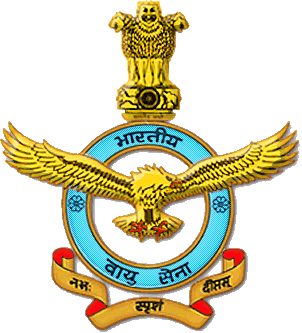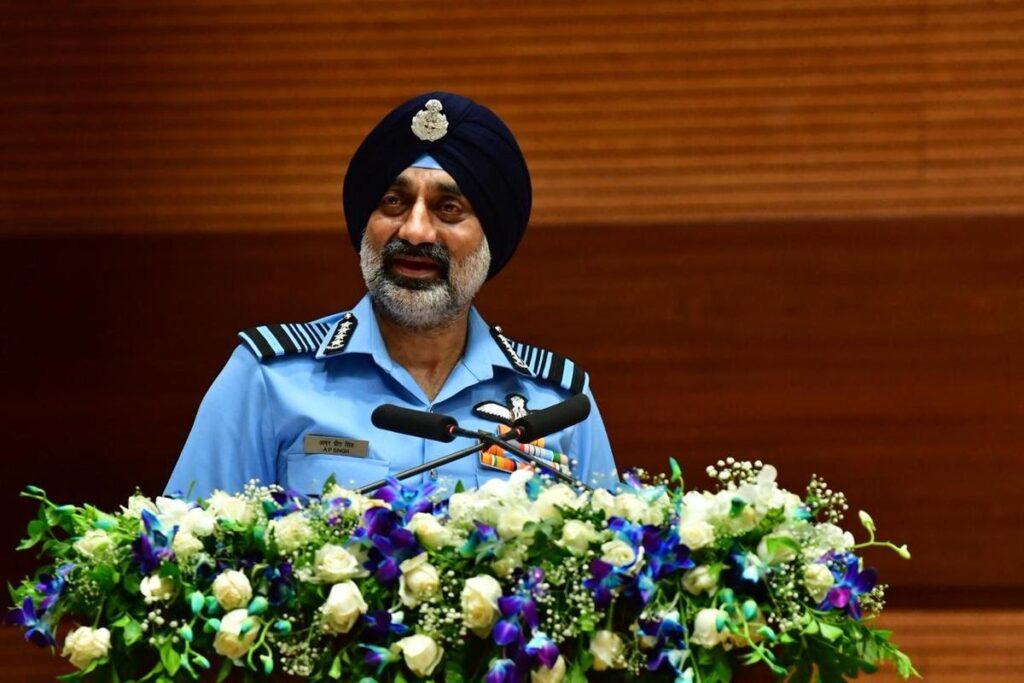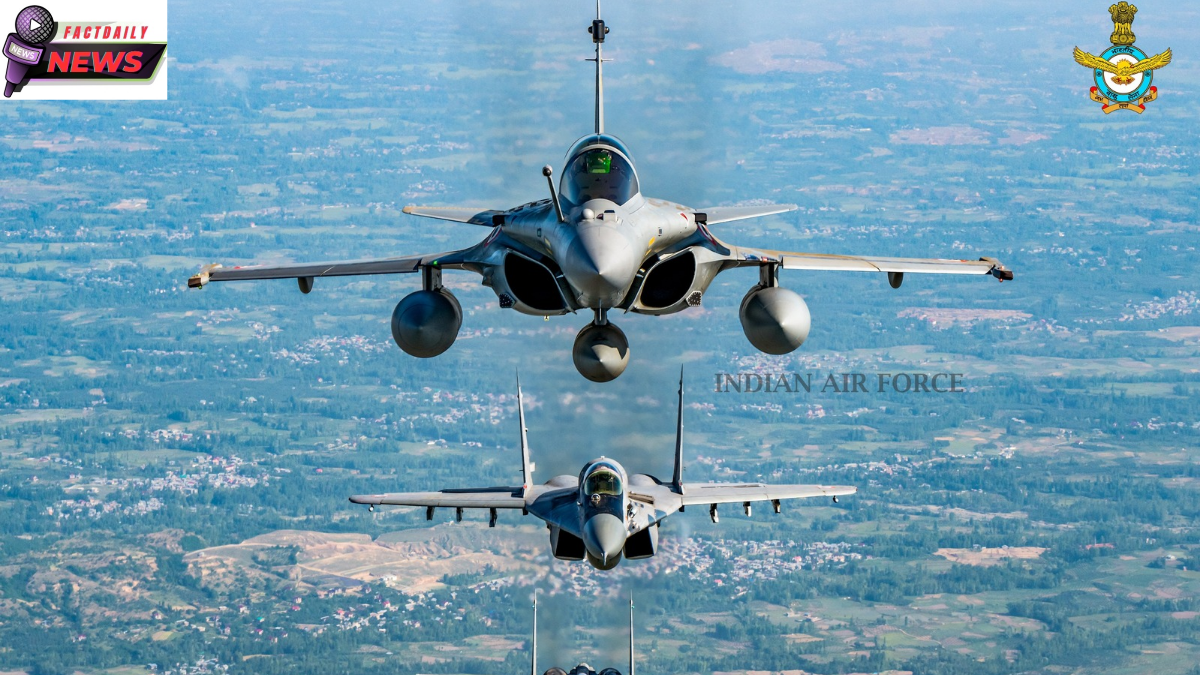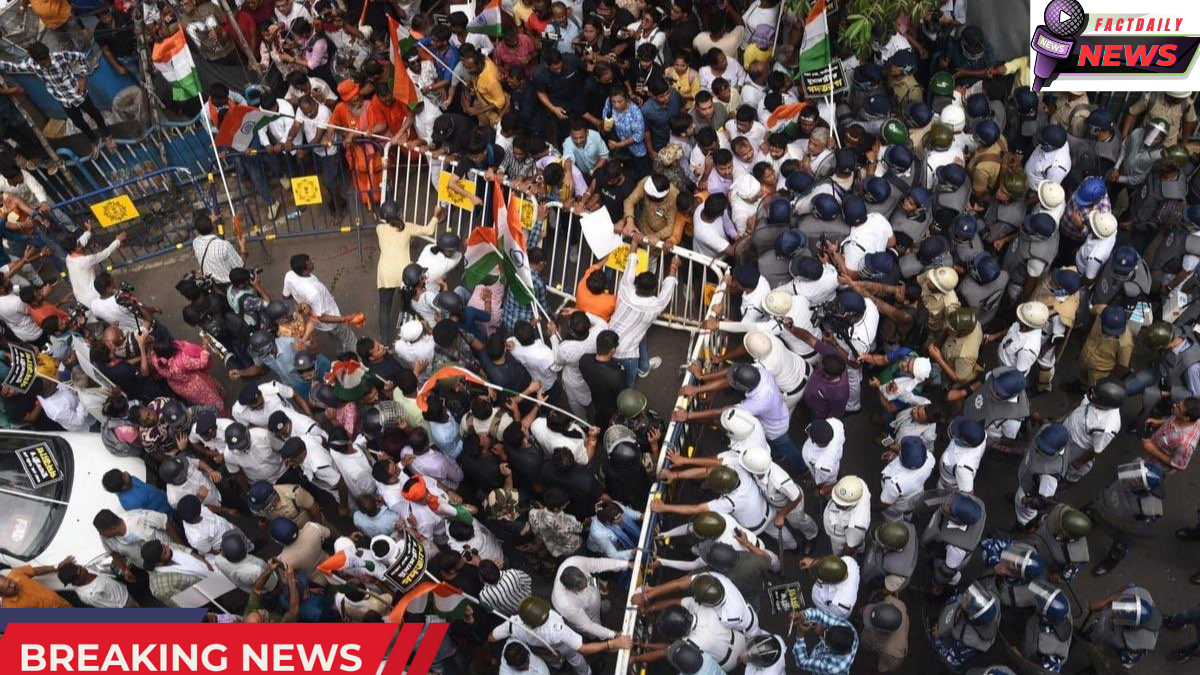Indian Air Force (IAF)
introduction👇
India’s Air Force (IAF) is more than roaring jets and dramatic flypasts — it’s the country’s airborne shield, rapid-response arm, and a major driver of defence technology and aerospace industry growth.This post gives you a clear history, structure, aircraft, recent developments, modernization plans, exercises, challenges and what to watch next — with the latest public updates included.
Quick snapshot (TL;DR)
➡️Founded: 1932 (Royal Indian Air Force), became Indian Air Force in 1950.
➡️Role: Air superiority, strike, transport, surveillance, humanitarian relief, airlift & deterrence.
➡️Key current hardware: Su-30MKI, Rafale, Mirage 2000, MiG-29, HAL Tejas (indigenous light fighter), heavy transports and helicopters.
➡️Big priorities: Modernisation (new fighters, radars, missiles), strengthening air-defence, unmanned systems and space capabilities, pilot training and force expansion.
1) A short history — from biplanes to stealth fighters:-
The IAF began modestly in 1932 under British rule and grew rapidly after independence.

Across the decades it evolved from piston-prop aircraft to supersonic jets, strategic airlift and precision strike capability. In the 21st century the focus shifted to replacing ageing MiG, Jaguar and Mirage fleets with modern fighters (Rafale, Tejas) and buying advanced air-defence systems (S-400), while investing in indigenous design (HAL Tejas, future AMCA).
2) How the IAF is organised (simple):-
Commands: Several operational commands (Western, Eastern, Southern, etc.) each responsible for a region.
Squadrons: Combat squadrons (fighters, transports, helicopters) form the operational units.
Support: Logistics, maintenance, and training establishments (pilot and technical training).
Leadership: Chief of the Air Staff (CAS) heads the IAF.
3) Main roles & missions:-
Air defence & air superiority —
protect Indian skies.
Offensive counter-air / strike —
precision strikes, interdiction.
ISR (Intelligence, surveillance, reconnaissance) —
AWACS, UAVs, satellites.
Transport & logistics —
troop lift, humanitarian missions.
Disaster relief & evacuation —
quick-response rescue and relief inside India and abroad.
4) What’s in the fleet?
- Fighter jets: Su-30MKI (workhorse), Rafale (modern multi-role), MiG-29, Mirage 2000, HAL Tejas (indigenous light combat aircraft).
- Transport: C-17 Globemaster, C-130J, IL-76 — strategic and tactical airlift.
- Helicopters: Mi-17, ALH Dhruv, Apache (attack), Chinook (heavy-lift).
- Air-defence & radar: S-400 systems, ground radars, airborne early warning (AWACS).
- UAVs: Tactical and strategic drones for surveillance and targeted missions.
5) Latest important updates (what’s new — 2025):-
Claims about Operation Sindoor and aircraft losses: In August 2025 the Chief of the Air Staff publicly stated that during a major

operation (referred to in public remarks as “Operation Sindoor”) the IAF had shot down multiple Pakistani military aircraft using long-range surface-to-air capabilities. These statements were significant and have been reported widely; however, such claims have been contested by Pakistan. Presenting them as official claims with the existing denials is important for balanced reporting.
Phase-out of MiG-21s:
The Air Force is moving to retire older types, and reports indicate the planned phase-out of MiG-21 fighters by around September 2025, with replacements coming from the indigenous Tejas fleet and other acquisitions.
Tejas Mk1A and local production push:
India has been expanding production of the HAL Tejas Mk1A, with multiple orders aimed at replacing ageing jets and improving squadron strength. The push for Make-in-India fighters is central to IAF planning.
MRFA (Multi-Role Fighter Aircraft) tender attempts:
The MoD and IAF have discussed a major open-tender MRFA program (aiming at procuring dozens of jets under a Make-in-India framework). This remains an important, evolving procurement project for the next decade.
Unmanned Force & space push:
The IAF is formally integrating unmanned systems and expanding space-oriented capabilities (satellite surveillance and communications) under future force planning to create a more “aerospace” focused service.
6) Exercises & training — how the IAF stays sharp:-
The IAF runs large-scale domestic exercises (Vayu Shakti, Gagan Shakti, Tarang Shakti) to test integrated operations, strategy and logistics under simulated conflict. It also trains with foreign partners (e.g., Red Flag and other joint exercises) to build interoperability and tactics. These exercises test everything from mass airlift to integrated air-defence and long-range strike coordination.
7) The modernization roadmap — what the IAF wants
Key elements:
Squadron strength:
Reaching the target squadron numbers by inducting Tejas, Rafale, and future AMCA.
Indigenisation:
HAL Tejas Mk1A, Tejas Mk2, and AMCA (Advanced Medium Combat Aircraft) aim to boost domestic capability. Collaborative engine and avionics deals with foreign partners are part of plans.
Air defence:
Deployments such as S-400 strengthen long-range air-defence.
UAVs & space:
Building ISR and strike-capable unmanned fleets and military space assets.
Sensors & weapons:
AESA radars, modern EW suites, beyond-visual-range (BVR) missiles, and precision munitions.
8) Challenges the IAF faces (plain talk):-
- Pilot shortage & training capacity:Rapid expansion needs more pilots and upgraded training aircraft/systems. Historical shortfalls in pilot numbers and ageing trainers are concerns that the IAF is addressing.
- Squadron strength gap: Ambitious targets have slipped; procurement and production bottlenecks keep the fleet smaller than desired.
- Supply-chain & production timelines: Indigenous projects (AMCA, Tejas Mk2) face development timelines and coordination issues with partners.
- Geopolitical realism: Regional tensions and the complexity of modern air warfare require quick adaptation and investment in integrated sensors, EW and space assets.
9) How the IAF matters to civilians — beyond war:-
- Disaster response: Massive relief and evacuation missions after floods, earthquakes and pandemics.
- Tech & industry growth: Defence contracts accelerate aerospace manufacturing and R&D in India.
- Jobs & education: Training academies and maintenance bases create skilled jobs and engineering opportunities.
10) What to watch next (short list):-
1. MRFA tender process and which platform wins or how the Make-in-India clause shapes the field.
2. Progress of HAL Tejas production and delivery schedules for Mk1A / Mk2.
3. AMCA progress and engine partnerships — if foreign engine tech links accelerate indigenous stealth development. (news items have suggested partnerships/technology links recently).
4. Evolution of the IAF’s unmanned force and military space assets.
11) Common myths & simple facts:-
- Myth: The IAF only fights wars.
- Fact: It is a constant peacetime deterrent, humanitarian responder, trainer and tech enabler.
- Myth: Indigenous means instant independence.
- Fact: Indigenisation is a process — capability grows over years with partnerships, testing and serial production.
12) Want to follow IAF news? Reliable sources:-
For accurate, up-to-date reports look to international wire services and major Indian newspapers (e.g., Reuters, The Indian Express, Economic Times) and official Ministry of Defence press releases. When reading claims about sensitive operations, check multiple outlets — official statements, independent reporting and responses from other governments — because fast-moving events are often contested.
Final thoughts
The Indian Air Force is in a transition phase: strengthening air-defence, expanding indigenous manufacturing, integrating drones and space assets, and reorganizing to meet 21st century aerospace threats. Recent public statements and procurement moves show ambition and evolving capability — but timelines, production and geopolitical realities will determine how fast these plans translate into squadron-level power.
If you’re writing a blog, news update or explainer about the IAF, treat sensitive conflict claims carefully (present them as official statements and note any denials), include a short “latest developments” box with dates and sources, and add visuals (aircraft photos, infographics of squadron structure) to increase reader engagement.





